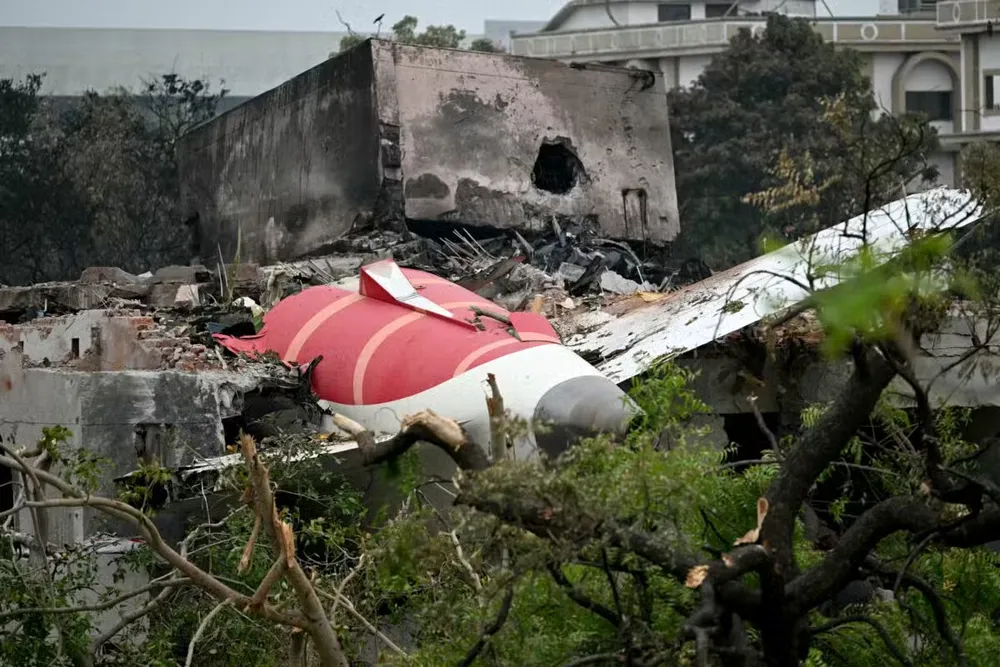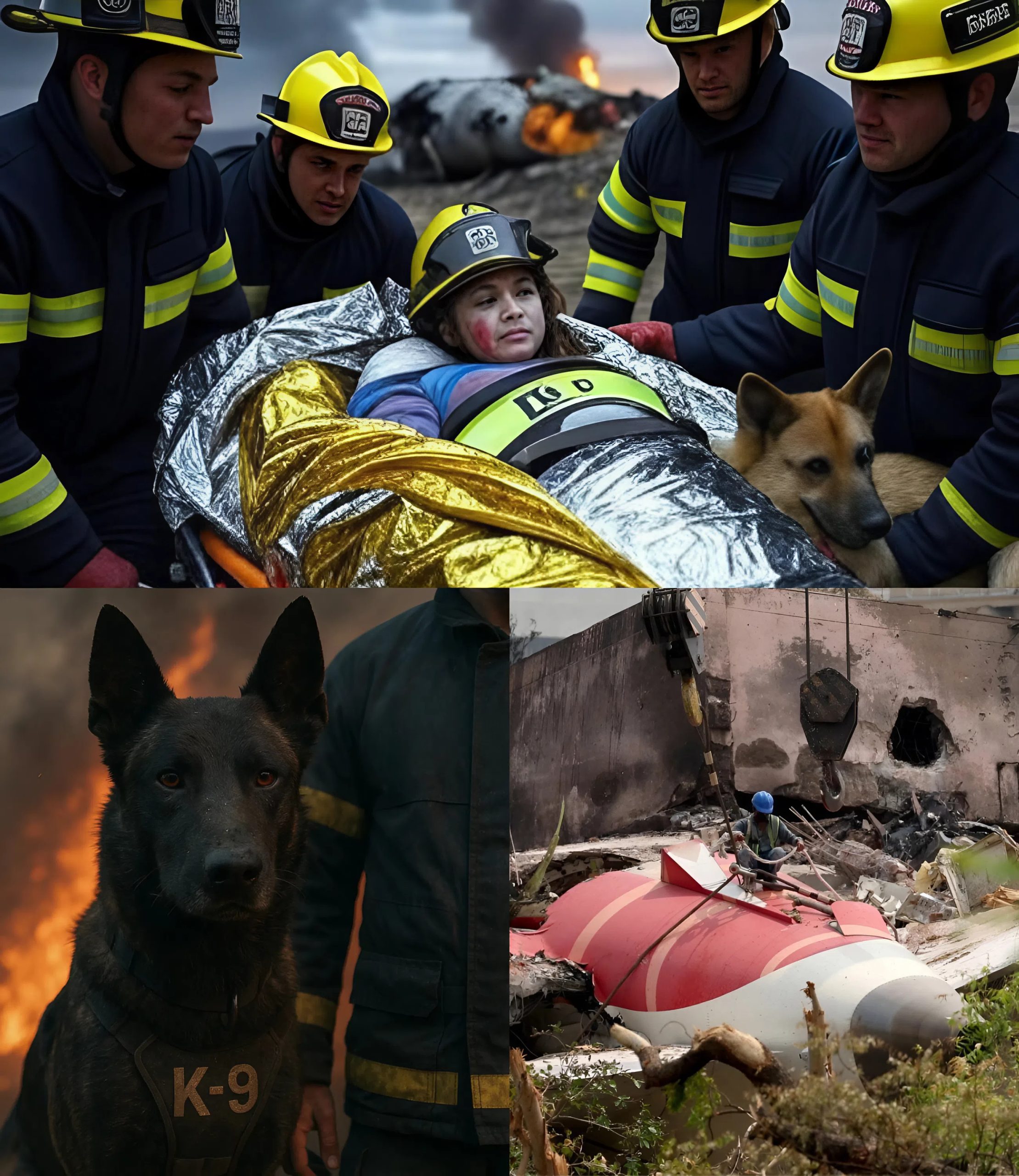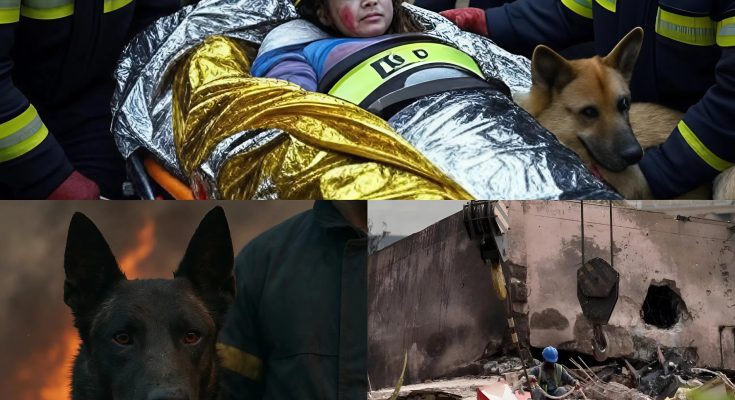At 6:47 AM on the morning of June 12, the people of Ahmedabad awoke to a terror they could never have anticipated. The skies, once tranquil, were torn apart by the mechanical screams of a Boeing 787 Dreamliner spiraling out of control. Within moments, the massive jetliner fell like a fireball into a dense residential block in Sarkhej, transforming an otherwise ordinary neighborhood into a smoldering graveyard of twisted metal, incinerated rooftops, and echoing cries.
Witnesses say the aircraft struck the earth like a burning rock from the heavens. Black smoke engulfed the skyline. Panic swept through the community as firefighters, police, and medical responders rushed toward the inferno. The initial assumption was grim but straightforward: no one could have survived such a catastrophic crash.
But amid the devastation — the silence punctuated by collapsing debris and distant sirens — two lives were miraculously reclaimed from the edge of death. And at the heart of that miracle were not machines, drones, or advanced surveillance — but two K9 service dogs whose instincts proved mightier than fear.
This is not just a story of disaster. It’s a story of sacrifice, survival, and the hidden bond between humans and animals. It’s a reminder of the thin line between life and death — and how, sometimes, that line is defended by paws, not hands.

The Crash: A Technical Failure with Human Consequences
Preliminary investigations from the Directorate General of Civil Aviation (DGCA) indicate that the Boeing 787, operated by Star Asia Airways, suffered a catastrophic dual engine failure shortly after takeoff from Chhatrapati Shivaji International Airport in Mumbai. The pilot attempted an emergency landing at Sardar Vallabhbhai Patel International Airport in Ahmedabad, but loss of hydraulic control systems and altitude instability made that impossible.
At 7:01 AM, Flight SA-821 slammed into a residential zone at a 28-degree angle, disintegrating on impact. The crash killed 49 people, including 31 passengers and 18 residents. Fires erupted in at least 14 surrounding homes, forcing dozens of families to flee barefoot into the street.
Amid the fire and wreckage, hope vanished quickly.
The K9s Who Refused to Give Up
Enter Veer, a four-year-old Belgian Malinois, and Rani, a five-year-old black Labrador, both members of India’s elite National Disaster Response Force (NDRF) K9 unit. Bred and trained for scenarios involving collapsed structures, fire zones, and biochemical hazards, these dogs were flown in by helicopter just over an hour after the crash.
Initial drone scans and thermal imaging failed to detect signs of life near the impact site, and officials began preparing to shift from rescue to recovery. But Veer had other ideas.
Just beyond the scorched wreckage of the aircraft’s left wing, near the crushed remains of a playground, Veer stopped. Ears erect. Nose twitching. He barked — not once, but in a rapid, staccato rhythm that K9 handlers are trained to recognize as an alert for live scent.
Within 15 minutes, emergency crews unearthed a pocket beneath the debris: a 7-year-old girl, pinned between the playground’s jungle gym and a detached segment of the aircraft’s floor. Her pulse was weak. She had severe smoke inhalation and third-degree burns on her arms. But she was alive — and the first miracle of the day was underway.
Meanwhile, Rani moved deliberately toward what was once the tail section, now collapsed into the basement of a nearby home. She pawed at the rubble, tail stiff, head down. Moments later, she whined — a sign of emotional stress K9s exhibit when sensing trauma but no movement. It was a risk. The scene was dangerous, unstable, and rapidly heating. But her handler, Inspector Rajesh Chavan, trusted her instincts.
Teams drilled through the debris and discovered a 32-year-old woman, a cabin crew member, badly wounded but conscious. She had been trapped beneath a steel beam and had used her uniform’s scarf to stem her bleeding. Rani had led them straight to her.
The Photo That Broke a Nation’s Heart
As day turned to night and the fires were brought under control, photographers captured a haunting image: Veer, lying beside a small, fire-scorched school bag, his chin gently resting atop it. What seemed like an accidental composition turned out to carry deeper meaning.
The bag belonged to the same 7-year-old girl he had helped rescue. Inside, untouched by flames, was a dog collar — charred but intact. Her parents later told reporters that she had brought it with her on the trip to remember her pet, who had died just the week before.
“She loved that dog more than anything,” her mother whispered, eyes red. “She said, ‘I’ll bring him with me in my heart.’”
When rescuers pulled her out, her first words were barely audible:

“Tell my dog… I’m okay.”
Beyond Instinct: How K9s Save Lives Where Humans Can’t
In a world increasingly obsessed with technology, AI, and automation, the Ahmedabad tragedy reminds us of something deeply human: the irreplaceable power of intuition, scent, and loyalty — traits not found in any machine.
Dogs like Veer and Rani are trained for years, not just in obedience or physical endurance, but in emotional connection. They sense despair. They react to silence. They refuse to give up, even when their human counterparts begin to lose hope.
Dr. Ishaan Bhargava, a behavioral canine psychologist, notes:
“A dog doesn’t search to succeed. It searches because it wants to find you. That’s the difference. That’s what machines can’t replicate.”
The Aftermath: Questions, Tributes, and Unfinished Business
As investigators probe what went wrong aboard Flight SA-821, questions are mounting:
-
Why did the engines fail just 22 minutes into the flight?
-
Was there a delay in declaring an emergency?
-
And why did onboard fire suppression systems fail to prevent such a devastating inferno?
But for now, public attention has turned not toward blame — but toward the unlikely heroes who brought hope out of horror.
Over 1.2 million people have signed a petition urging the Indian government to award Veer and Rani with the Shaurya Chakra, a peacetime gallantry medal rarely awarded to animals. Both dogs are recovering from burns and fatigue, but are expected to return to duty after weeks of rest.
Final Words: A Legacy of Loyalty
In the heart of Ahmedabad, surrounded by ruin and sorrow, two dogs ran into a fire that humans feared. They sniffed out life when the machines found none. And they reminded a grieving country — and a divided world — that courage sometimes walks on four legs, and heroes do not always wear uniforms.
They wear collars.
And they never stop searching.
Even when we give up.
Even when the sky falls.







